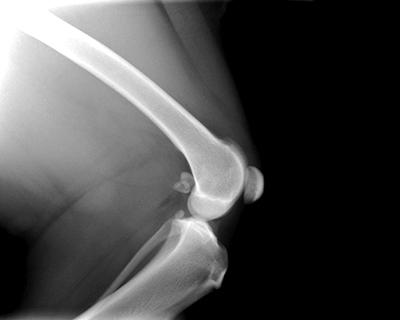Hey guys, this is Nikki lead Veterinary Technician with Posh Dog Knee Braces. Let’s talk about the cruciate ligament, and what it does for us. As the name states, the cruciate ligaments form a cross behind the dog’s knee. The Cranial Cruciate Ligament in dogs is the same as the anterior cruciate ligament (ACL) in humans. This is made up of many different fibers that work to attach the femur to the tibia, which keeps the tibia from moving.
This is why in order to diagnose a CCL rupture, your veterinarian will do what is called a “drawer test” in which they check the movement and shifting of the tibia. If the ligaments are healthy, there should be no movement, or positive drawer sign.

Trauma or degenerative disease to the ligament can damage some of the fibers that make up this ligament. Sometimes you may be told it is a “partial” or a “full” cruciate ligaments tear, however, this is impossible to fully know without going into the joint arthroscopically, or having an MRI done.
We can’t know if the ligaments are simply diseased and stretching more than they should, or fully ruptured which then puts strain on the meniscus. With a trauma, these fibers tear all at once, causing pain and inflammation, and more acute symptoms. Degenerative disease is like a fraying rope, those fibers break over time, and you may not notice the subtle signs. Or your dog may limp here or there, but not all the time.
Unfortunately, most ruptures in a dog are the result of long-term degeneration, where things get weaker and tear over a period of time. Genetics are one of the reasons for degeneration, these breeds include Labradors, rottweilers, boxers, west highland terriers, and newfoundlands. There are more breeds, but these are the most common. Some family lines can be checked out, and I would encourage asking about any history on a future puppy in one of these breeds. It can be detrimental to have a healthy 2 or 3 year old dog with bilateral CCL tears, and we do unfortunately see that.
Another factor to think about would be early spay or neuter. I have another blog on this subject if you would like more information, but to summarize we should not be spaying or neutering until a dog has reached maturity. By doing so, we cause the tibia to continue to grow, which can change the angle in the knee stretching the ligaments. At least a year as a minimum, some large breeds should be 2 years before sterilizing.
Fraying of the ligament can trigger a lot of internal things, such as pain and lameness. Usually with degeneration, there is already osteoarthritis present. The goal here is to stop the movement of the knee, either with a surgical procedure or the less invasive knee bracing options. Bracing will stop the movement of the tibial thrust, as well as acting as a shock absorber, allowing a patient to fully weight bear with the brace on. This will help with getting back to walks and a happy lifestyle.
The more osteoarthritis present, the less successful a patient will be with surgery. As the majority of cases are degenerative, bracing seems to be one of the better solutions. Please email us with any questions, and check us out on Facebook. Let’s help improve his life and yours with our Posh Dog Knee Brace. Custom Crafted Dog Knee Brace, is much more effective than a ready to wear or a soft dog ACL/CCL brace. You can contact Posh Dog Knee Brace via phone at 509-412-3065.